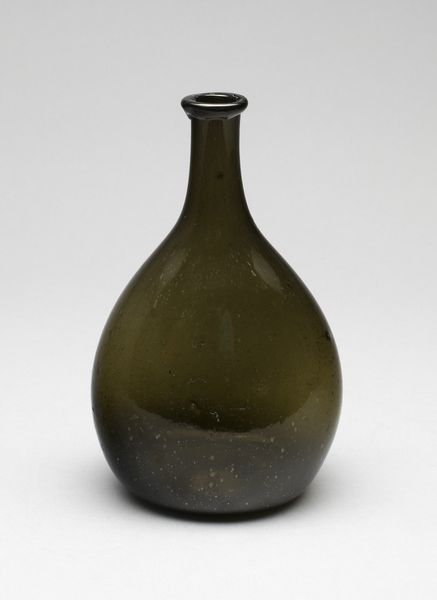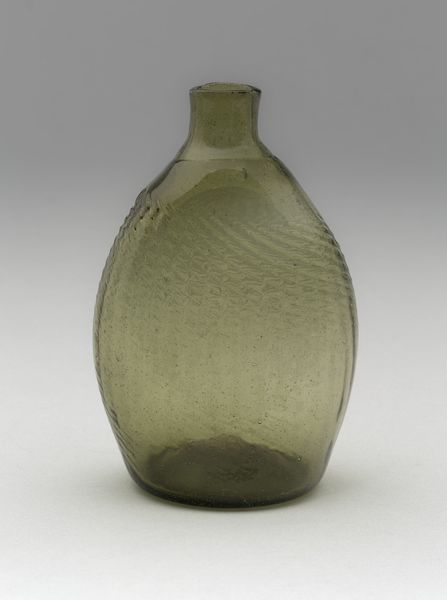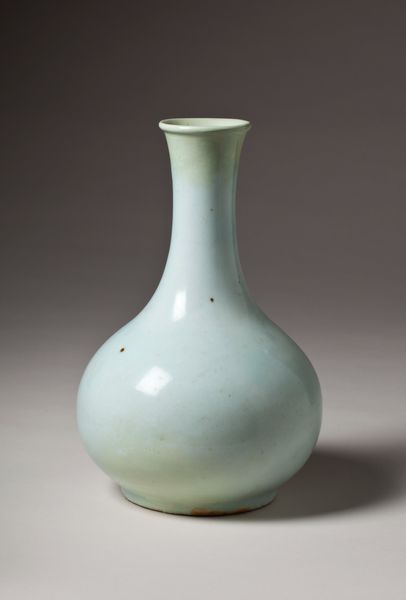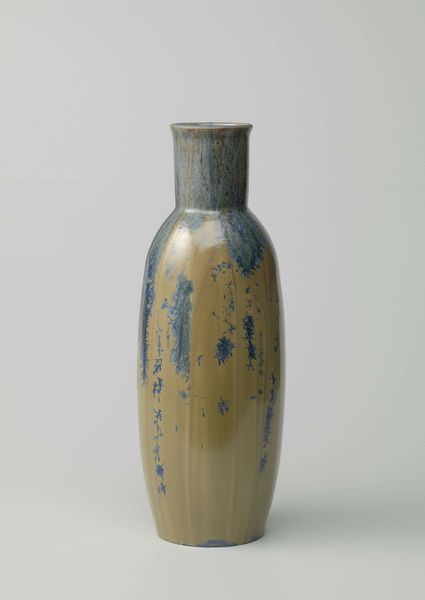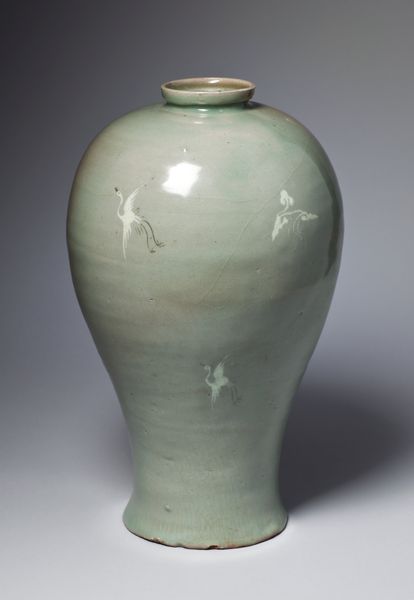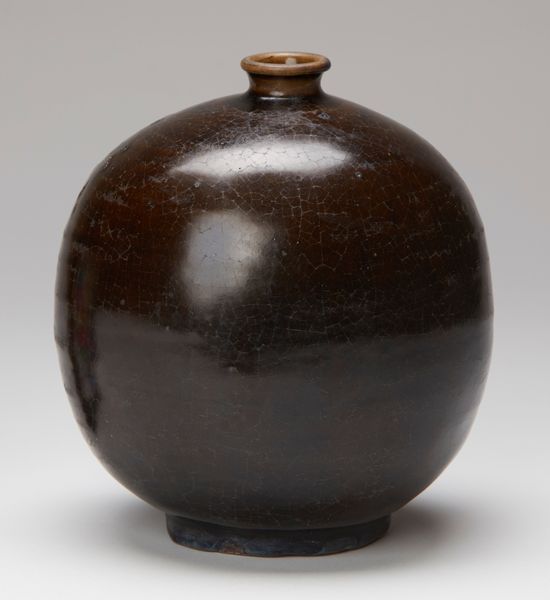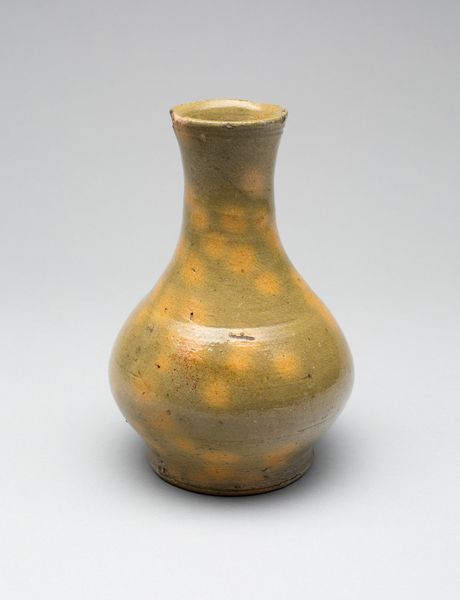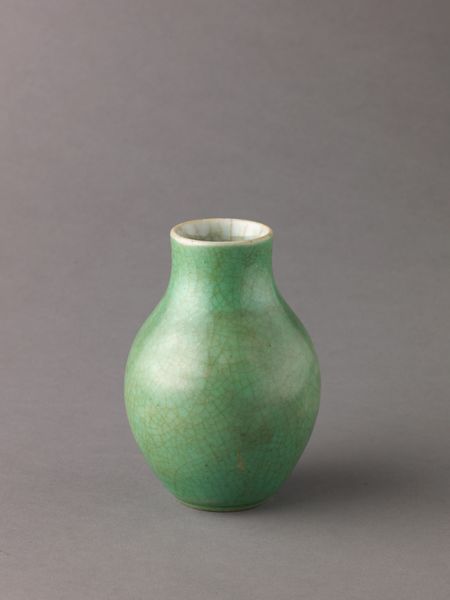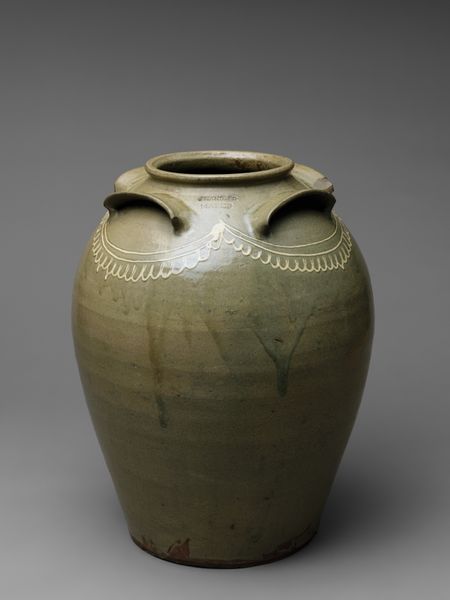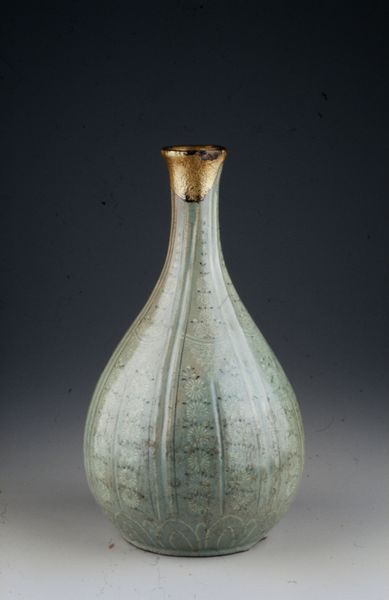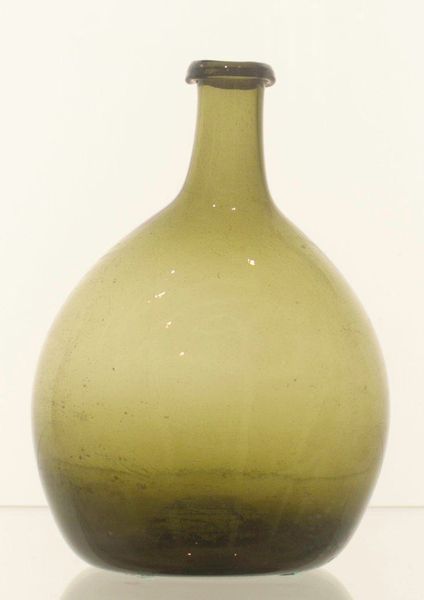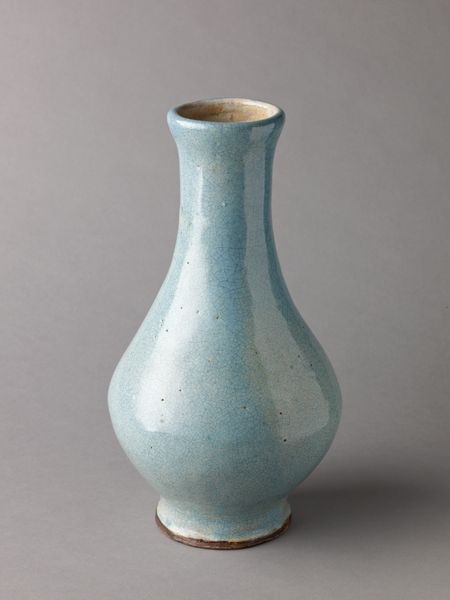
glass
#
neoclacissism
#
glass
#
decorative-art
Dimensions: 16.5 × 10.8 × 7.6 cm (6 1/2 × 4 1/4 × 3 in.)
Copyright: Public Domain
Curator: This piece is an olive-green glass bottle from between 1821 and 1829, currently held at the Art Institute of Chicago, and crafted by the Mantua Glass Works. Its form and materials certainly reflect the period’s tastes, particularly within decorative arts. Editor: My first impression is a sense of humble, rustic charm, surprisingly elegant in its simplicity, even melancholy perhaps? It doesn’t strike me as purely functional. Curator: Precisely! The materiality is crucial here. Consider the likely impurities in the glass, those tiny bubbles trapped within, the unevenness. This speaks to the specific processes, to the skill and limitations of early 19th-century glassmaking. Editor: The shape calls to mind classical amphorae but rendered in humble, accessible materials, less the idealized form and more of its practical descendant. Is there something being conveyed about social shifts here, classical ideals adapted for everyday utility? Curator: Indeed! The neo-classical period influenced designs in ways beyond architecture or painting. It suggests the democratization of style. Glassware production shifted towards fulfilling broader social needs. What symbols might you find resonating here? Editor: Beyond the allusion to classical forms? Perhaps the bottle, itself, as a container, becomes a symbol for holding traditions, flavors of history, or distilled experiences... olive-green suggesting both peace and perhaps also a kind of understated prosperity, considering what it likely held – oils or wines once coveted goods. Curator: Very insightful. It's a potent vessel indeed, bridging functionality and aspiration, connecting craft and larger economic narratives within that era. How consumption patterns mirrored aesthetic sensibilities. Editor: And vice versa, surely. Studying this object gives insights into production alongside deeper values; what we chose to preserve. Something profoundly domestic resides within even so simple an object, a ghost of daily lives contained. Curator: Precisely the synthesis between object, manufacture and meaning is exactly the goal of careful study here. Editor: It prompts reflections beyond surface appearances. An entire social ecosystem is now evoked by an unassuming glass form, centuries on.
Comments
No comments
Be the first to comment and join the conversation on the ultimate creative platform.
